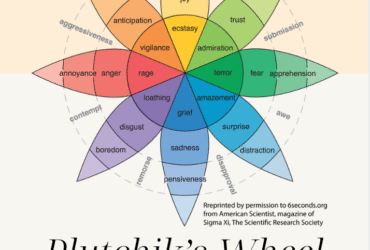Data science fuels cybersecurity by analyzing large datasets to uncover patterns of malicious activity. It leverages machine learning to predict and mitigate potential threats.
Cybersecurity stands as a critical defense mechanism for protecting information systems and sensitive data from digital attacks. With the proliferation of data breaches and cyber threats, the integration of data science into cybersecurity has become an essential strategy for enhancing security measures.
Data scientists employ sophisticated algorithms and analytical techniques to detect anomalies, enabling organizations to respond to incidents swiftly and effectively. This proactive approach to security, powered by the insights garnered from big data, is vital for anticipating and preventing cyber attacks before they cause harm. The collaboration between data science and cybersecurity is shaping a new frontier in digital protection, where predictive analytics and machine learning pave the way for more robust and intelligent security solutions. In this dynamic landscape, staying ahead of threats means continuously adapting and evolving with cutting-edge data science applications.

Credit: datasciencedojo.com
The Intersection Of Data Science And Cyber Security
Data Science and Cyber Security converge to create powerful defenses against cyber threats. Both fields share core concepts and continually embrace new advancements. Let’s delve deeper into these two crucial areas.
Core Concepts Uniting The Fields
Cyber Security and Data Science work together to minimize cyber risks. Key shared principles include:
- Data Analysis: Both fields rely heavily on data analysis to find beneficial solutions.
- Pattern Recognition: Identifying patterns in data supports the prediction of future cyber-attacks.
- Machine Learning: This tool plays a significant role in detecting unauthorized activities.
Recent Advancements At The Crossroads
Recent years have seen exciting breakthroughs at the intersection of these fields:
- Behavioral Analytics: This technology identifies abnormal user behavior and alerts the security system.
- AI-based Threat Identification: This approach improves the detection of cybersecurity threats.
- Automated Defence: Automation speeds up response times to cyber attacks reducing damage.
Thus, the union of Data Science and Cyber Security helps enhance cyber resilience.
Unpacking Cyber Threats In The Modern World
Let’s uncover the world of cyber threats today. These threats pose serious risks to our digital lives. Understanding them can help to reinforce protection mechanisms.
Types And Magnitudes Of Current Cyber Threats
Cyber threats come in various forms as they evolve in scale and sophistication. These threat forms can be daunting. Here’s a quick review:
- Malware: Harmful software, such as viruses and worms, can bring havoc.
- Phishing: Frauds usually via emails lure victims into revealing sensitive data.
- Ransomware: It locks up user data, after which the hacker demands a ransom.
- DDoS: Attackers flood systems, servers, or networks to exhaust resources.
There is a surge in the magnitude of these threats. Last year alone, billions lost due to cybercrimes.
Evolving Tactics Of Cyber Adversaries
Attacker tactics are improving. Staying updated can strengthen safety measures. Here is a look at ongoing trends:
- Social Engineering: Trickery to manipulate individuals into damaging actions or revealing confidential details.
- A.I Hacking: Use of A.I algorithms to improve the speed and efficiency of attacks.
- State-Sponsored Attacks: Attacks managed or funded by government agencies.
The power of data science helps in predicting these threats. It deals with the crucial task of analyzing patterns to detect imminent risks. The advancements in data science are contributing to the strengthening of cybersecurity.
Data Science As A Beacon Of Hope
In the vast sea of digital threats, data science emerges as a lighthouse, guiding the cyber security industry to safety. Its advanced tools and techniques are like superpowers. These powers help in fighting off villains—hackers and cyber threats. It brightens the path for security professionals, leading them to predict, detect, and respond to risks faster and more accurately than ever before.
Predictive Analytics And Its Impact
Predictive analytics use historical data to foresee future events. In cyber security, it studies patterns and trends to predict possible attacks. Here is what happens:
- Pattern Recognition: It spots unusual activities that might signal a threat.
- Actionable Insights: These insights help in making smart decisions to bolster defenses.
- Rapid Response: Teams can act quickly to prevent or mitigate damage from potential threats.
Machine Learning Algorithms In Threat Detection
Machine learning is a data science super tool. It takes threat detection to a new level. Here’s how:
- Learning from Data: It learns from vast amounts of security data to spot threats.
- Automated Defense: These algorithms work round the clock, reducing the need for manual monitoring.
- Evolution: They keep getting better with more data, adapting to new types of attacks.
Machine learning helps create a smarter, more resilient cyber security posture. It turns raw data into a shield that protects against digital dangers.

Credit: datasciencedojo.com
Case Studies: Data Science In Action
Data science stands as a powerful ally in the fight against cyber threats. It helps experts predict and prevent attacks. Our focus is on real-world examples where data science has played a crucial role.
Success Stories In Thwarting Cyber Attacks
- A financial institution used predictive analytics to detect fraudulent transactions. They saved millions.
- An e-commerce platform combined machine learning models with user behavior data to stop credential stuffing attacks. Customer trust soared.
- A global enterprise implemented anomaly detection systems. They spotted a large-scale data breach attempt in real time and blocked it.
Learning From Past Breaches
Careful analysis of previous cyber incidents teaches valuable lessons. Below are brief explorations of two instances where data science led to enhanced security protocols.
| Incident | Data Science Application | Outcome |
|---|---|---|
| Retailer data theft | Used cluster analysis to identify flaws in point-of-sale systems | Strengthened transaction security, reducing theft by 75% |
| Healthcare breach | Deployed AI to track network behavior, observing patterns leading to a leak | Revised access policies, mitigating risk of future leaks |
In both cases, data scientists turned information into action, solidifying cyber defense lines and protecting sensitive data from malicious actors.
Challenges At The Frontlines Of Defense
Data science powers cybersecurity by unveiling patterns within complex data to reinforce frontlines of defense. Leveraging machine learning algorithms, experts predict and thwart cyber threats, ensuring robust protection in an ever-evolving digital landscape.
Defending sensitive data from cyber threats is a grueling task. The cyber security sector faces numerous challenges, especially in the era where access to high-powered computing and advanced hacking techniques are becoming readily available. Here, we review the main challenges in cyber security and explore how data science goes hand in hand to tackle them.
Balancing privacy concerns with security
With the rise in cyber threats, balancing privacy with security is becoming harder. Large amounts of data are needed to predict and prevent attacks. However, holding this data can lead to privacy breaches.
Data science is handy here. It can analyze heavy data volumes without infringing on privacy rights. Meanwhile, it ensures your security systems remain strong and effective.
Staying ahead of sophisticated cybercriminals
Cyber criminals are smart and they never stop evolving. To keep up with them, your defense must always be ahead. This means staying updated on the latest hacking strategies and making sure your defense mechanisms are bullproof.
This is where data science can be beneficial. It’s able to detect slightest changes in data patterns, identifying potential threats, and taking action before it’s too late. This can help your business to stay one step ahead always.
Ensuring data integrity
Protecting data from unauthorized changes is as important as protecting it from theft. This is known as data integrity. Unfortunately, it often overlooked by many cyber security professionals.
<Data science is instrumental in ensuring data integrity. It can track data's journey, flagging any unusual changes before it enters your system. This helps to secure your data further and protect it from unauthorized modifications.

Credit: www.linkedin.com
The Future Of Cyber Security With Data Science
Data Science shapes the future of cyber security. Fancy algorithms and big data help find threats faster. Experts see patterns and fix holes before hackers can get through. Cyber defense becomes smarter as data science advances.
Innovations On The Horizon
Technology moves quick, and data science brings new tools to fight cybercrime. Look for these innovations:
- Machine learning predicts attacks before they happen.
- AI-driven security systems adapt and learn on the go.
- Data crunching spots sneaky malware that hides well.
These tools will change how we guard our digital lives.
Preparing For The Next Generation Of Cyber Defense
Training and education are key for new cyber defenders. They need to know data science as well as security. Schools and companies should provide courses that cover both. This prepares them for jobs that keep our data safe.
| Data Science Skills | Cyber Security Skills |
|---|---|
| Statistics | Threat Analysis |
| Machine Learning | Incident Response |
| Big Data Analytics | Encryption Practices |
Businesses need to invest in tech that uses data science for cyber security. This will help them keep ahead of threats. Tools that learn and react to security issues are the future. With the right skills and tools, the next wave of cyber defense looks strong and smart.
Frequently Asked Questions For How Is Data Science Used In Cyber Security
How Is Data Used In Cyber Security?
Data in cybersecurity helps detect threats, analyze risks and implement protection measures. It aids in predicting future attacks and enhancing security infrastructure. Data ensures continuous monitoring for malware detection, thus, safeguarding sensitive information.
Can A Data Analyst Become A Cyber Security Analyst?
Yes, a data analyst can transition to a cyber security analyst role. By gaining knowledge and skills in cyber security, they can make this career change successfully. Continuous learning and training are key to the shift.
How Can Data Science Techniques Enhance Data Security?
Data science techniques bolster data security by identifying anomalous behavior, predicting threats through analytics, and automating real-time threat detection systems. These strategies enable proactive security measures and swift incident responses.
How Much Do Cyber Security Data Scientists Make?
Cyber security data scientists earn a varying salary. On average, in the US, their annual pay ranges from $95,000 to $155,000, dependent on experience and location.
Conclusion
Deciphering the role of data science in cyber security, it’s evident that it provides a robust defense mechanism. Through predictive modeling, anomaly detection, and pattern recognition, it fortifies cyber security measures. Therefore, harnessing data science techniques can significantly increase safety in this digital age, making it an instrumental aspect of cyber security.













































Leave a Reply